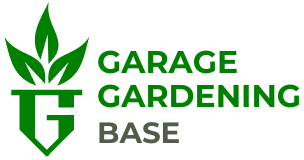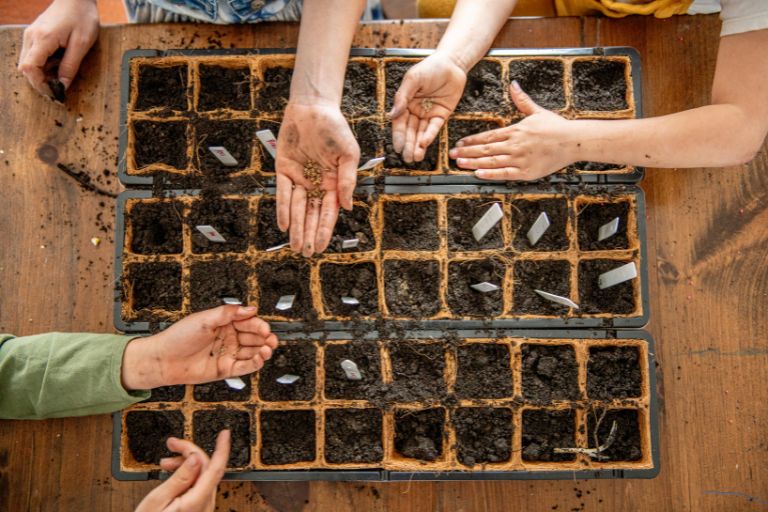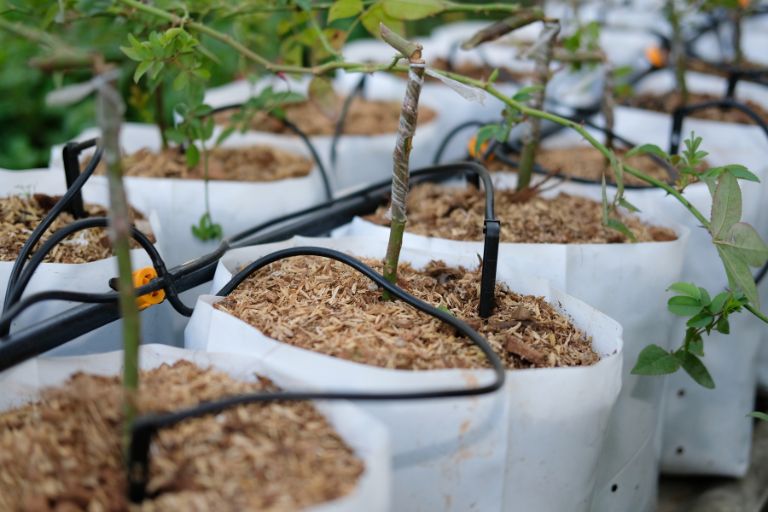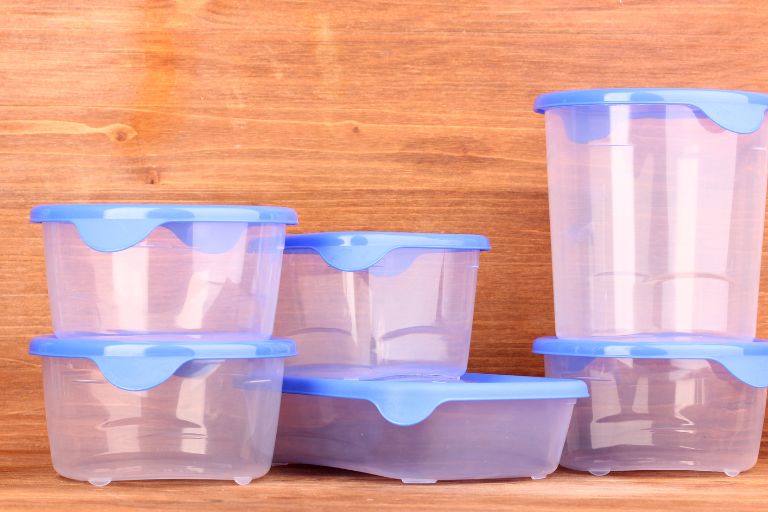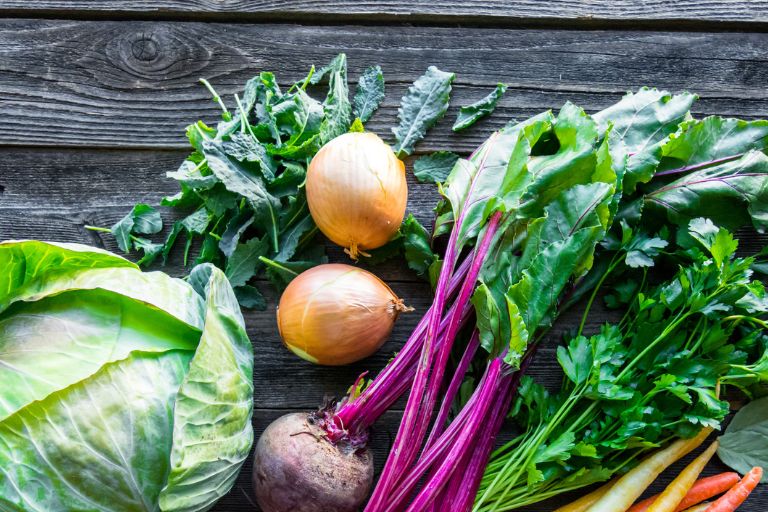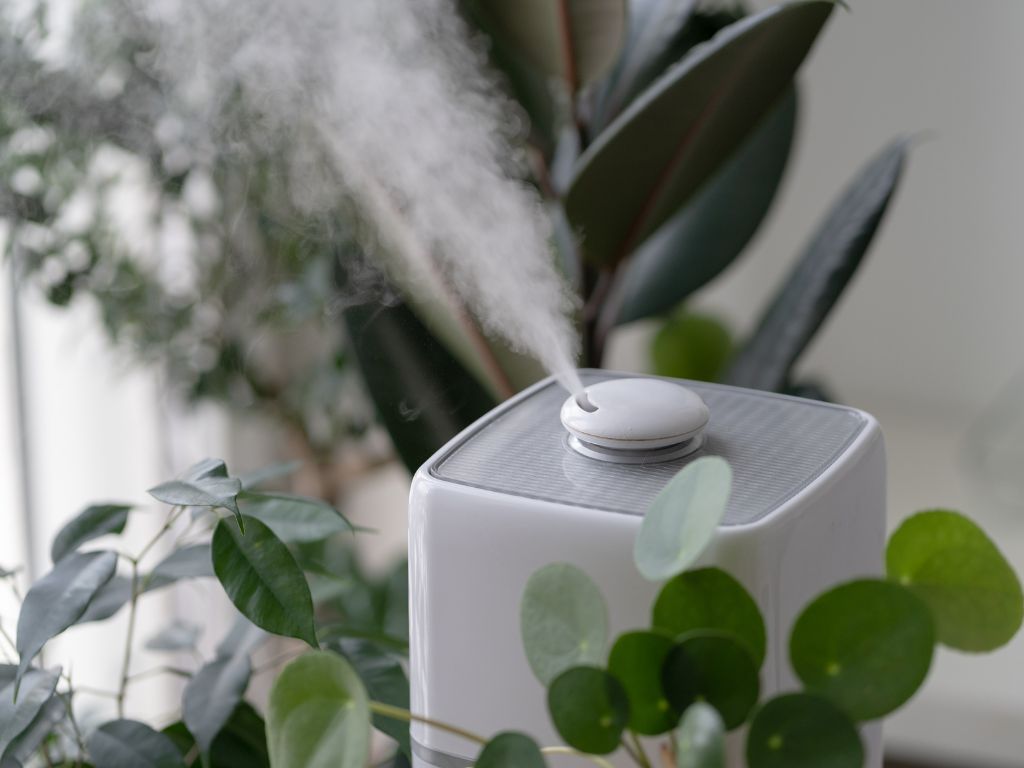The Essential Guide to Choosing the Right Tools for Your Garage Garden
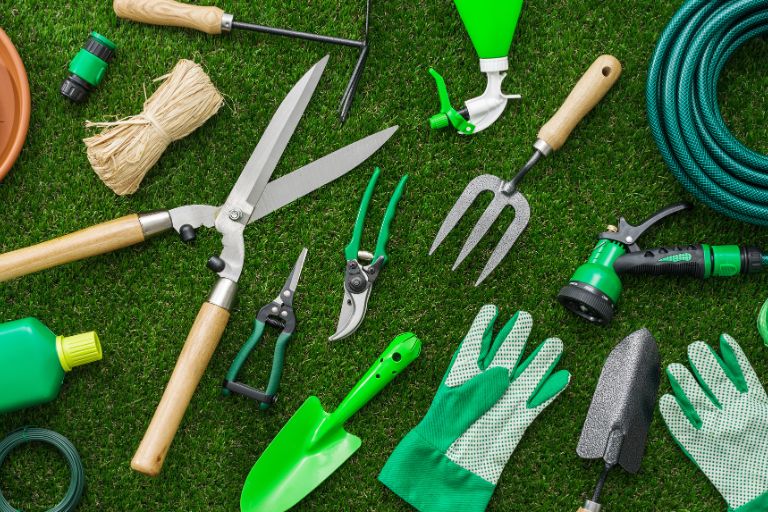
Welcome to the essential guide to choosing the right tools for your garage garden. In this comprehensive exploration, we delve into the intricate tapestry of considerations that underpin the art of tool selection, offering insights, tips and practical advice to empower garden enthusiasts in their quest for horticultural mastery. From understanding the unique needs of your garden to navigating the vast array of tools available, join us on a journey to unlock the secrets of a thriving garage garden.
Understanding Your Garden’s Needs
Assessing the size, layout and specific requirements of your garage garden is the first step in cultivating a thriving green space. Whether your garden sprawls across a spacious garage roof or occupies a modest corner, understanding its dimensions and layout is essential to making the most of the space. Take stock of the area available and note any obstacles or limitations that may affect your gardening efforts.
Equally important is identifying the types of plants you want to grow in your garage garden. Will it be a haven for succulent vegetables, aromatic herbs or vibrant flowers? Each type of plant has its own maintenance requirements, from watering frequency to soil composition. By determining your desired plant palette early on, you can tailor your choice of tools and garden maintenance practices accordingly.
Environmental factors also play a key role in the success of your garage garden. Consider the amount of sunlight your garden receives throughout the day, as this will determine the suitability of different plant species. Assess the soil type in your area and its drainage capabilities, as well as any modifications that may be required to optimise growing conditions. Climate variations, including temperature and seasonal changes, should also be considered to ensure plant health and vitality.
In essence, by carefully evaluating the size, layout, plant selection and environmental nuances of your garage garden, you are laying the foundations for a thriving oasis teeming with life and vitality. Armed with this holistic understanding, you can then select the most appropriate tools and embark on your gardening journey with confidence and purpose.
Essential Tools for Garage Gardening
Hand Tools
Trowel – A versatile tool essential for a variety of gardening tasks, the trowel facilitates precise planting, transplanting and soil turning. Its sturdy yet narrow blade allows you to dig small holes for seeds or seedlings, making it essential for getting your garden growing.
Hand Fork – Ideal for loosening compacted soil, removing weeds and aerating the soil, the hand fork is essential for maintaining soil health and promoting optimum plant growth. Its sharp tines penetrate the soil with ease, allowing efficient soil turnover and weed removal without disturbing plant roots.
Hand Cultivator – Designed to break up clods, cultivate the surface and remove debris, the Hand Cultivator is a versatile tool for maintaining soil structure and promoting root development. Its tines effectively loosen compacted soil, allowing better water penetration and nutrient uptake by plants.
Pruning shears – Essential for shaping, trimming and maintaining the health of your plants, pruners come in a variety of designs to suit different tasks. Hand pruners with sharp blades allow precise cutting of small branches, dead foliage or spent flowers, promoting plant vigour and aesthetic appeal.
Scissors – Although not exclusively a gardening tool, scissors serve a variety of purposes in the garden, from harvesting herbs and flowers to pruning delicate stems. Choose sharp, stainless steel scissors with comfortable handles for effortless, precise cutting that minimises damage to plants.
Handheld watering can or spray nozzle – Providing a gentle and controlled flow of water, a handheld watering can or spray nozzle is essential for precise watering of your plants. Whether watering seedlings, delicate foliage or container plants, these tools ensure even distribution of water, minimising waste and optimising hydration. Choose a watering can with a narrow spout or a spray nozzle with adjustable settings to suit the specific needs of your garden.
Long-handled tools
Spade – A sturdy and versatile tool, the spade is essential for digging planting holes, edging beds and excavating soil. Its flat, square blade allows precise cutting and lifting of turf, making it easy to create defined garden borders and install plants.
Shovel – Designed for moving and lifting loose materials such as soil, compost or mulch, the shovel is essential for a variety of gardening tasks. Its curved blade and long handle provide leverage for efficient scooping and transferring of materials, making it ideal for filling containers, spreading amendments or clearing debris.
Hoe – An essential tool for weeding and tilling, the hoe comes in a variety of shapes and sizes to suit different gardening needs. From chopping and uprooting weeds to breaking up compacted soil, the hoe’s sharp blade and long handle allow for quick and effective soil manipulation, promoting optimal growing conditions for your plants.
Rake – Whether levelling soil, raking leaves or spreading mulch, the rake is a versatile tool for maintaining a tidy and well-kept garden. Its sturdy tines and long handle facilitate efficient removal of debris and smoothing of the soil, ensuring a clean and even surface for planting or landscaping projects.
Garden Fork – Designed for loosening compacted soil, aerating the soil and lifting heavy objects, the Garden Fork is a robust tool that is essential for soil preparation and maintenance. Its sharp tines easily penetrate the soil for efficient soil turning and root penetration, while its sturdy construction allows you to lift and move rocks, debris or root-bound plants with minimal effort.
Specialist tools
Soil pH meter and moisture meter – Essential for maintaining optimal soil conditions, a soil pH meter and moisture meter are invaluable tools for monitoring the health and moisture levels of your garden soil. By accurately measuring pH levels, you can ensure that the acidity or alkalinity of your soil is conducive to the growth of your chosen plants. Similarly, monitoring soil moisture levels will help prevent under- or over-watering, ensuring that your plants receive the right amount of moisture for healthy growth and development.
Gardening gloves – Protecting your hands from thorns, prickles and harmful chemicals is paramount when working in the garden. Gardening gloves provide a barrier between your skin and potential hazards, preventing cuts, scratches and irritation. Look for gloves made from durable materials such as leather or synthetic blends, with reinforced fingertips and palms for extra protection. Also look for gloves that offer flexibility and breathability for comfort during prolonged use.
Knee pads or garden stools – Maintaining a comfortable posture and protecting your knees when kneeling for long periods is essential to prevent strain and discomfort. Knee pads or a garden stool provide support and cushioning, reducing the strain on your joints and muscles when working close to the ground. Knee pads with adjustable straps and ergonomic designs offer a customisable fit, while garden stools with sturdy construction and padded seats provide a comfortable seating option for tasks such as planting, weeding or harvesting.
Quality vs. Cost
The importance of investing in quality tools that are durable and ergonomically designed is paramount to ensuring efficiency, effectiveness and long-term enjoyment in your garage gardening endeavours.
Durability – Quality tools are built to withstand the rigours of regular use and outdoor exposure, offering superior durability and longevity compared to their cheaper counterparts. Investing in durable tools means fewer replacements and repairs, saving you time, money and frustration in the long run.
Performance – Superior craftsmanship and materials translate into better performance and functionality in quality tools. Whether you’re digging in compacted soil, pruning thick branches or watering delicate seedlings, well-made tools deliver the precision, strength and reliability you need to tackle a wide range of gardening tasks with ease and efficiency.
Ergonomics – Ergonomically designed tools are engineered with user comfort and safety in mind, reducing strain, fatigue and the risk of repetitive stress injuries from prolonged use. Features such as cushioned handles, non-slip grips and balanced weight distribution enhance comfort and control, allowing you to work comfortably and efficiently for long periods without discomfort or strain.
Investment value – Quality tools may cost more upfront, but they offer greater value over time through superior performance, durability and longevity. By investing in durable and ergonomically designed tools, you’re making a smart long-term investment in the productivity, enjoyment and success of your garage garden, and reaping the rewards for years to come.
Exploring budget-friendly options and cost-saving strategies without compromising on functionality and performance is essential for aspiring gardeners looking to create a thriving garage garden without breaking the bank. To help you find affordable tools without sacrificing quality, here are a few tips:
Research and compare prices – Take the time to research different brands, models and retailers to compare prices and find the best deals on gardening tools. Look out for sales, discounts and promotions, especially during off-season or holidays, to make significant savings on essential equipment.
Opt for multipurpose tools – Choose versatile tools that can perform multiple functions to maximise value for money. For example, a serrated garden knife can be used for weeding and aerating, while a hand cultivator with interchangeable heads can be used for both weeding and cultivating.
Consider second-hand or gently used tools – Check thrift stores, garage sales, online marketplaces and community swap meets for used garden tools in good condition. Second hand tools can often be found at a fraction of the cost of new ones, allowing you to build your gardening arsenal at an affordable price.
DIY and repurposing – Get creative and reuse household items or repurpose old tools for new gardening purposes. For example, old kitchen knives can be sharpened and used as makeshift trowels, while sturdy plastic containers can be used as improvised watering cans or seedling pots. DIY projects such as building raised beds from reclaimed wood or making compost bins from recycled materials can also help save money and add a personal touch to your garden.
Borrow or share tools – Consider borrowing or sharing tools with friends, family or neighbours who have surplus equipment or are willing to collaborate on gardening projects. Pooling resources gives you access to a wider range of tools without the need for individual ownership, reducing costs and encouraging community involvement in gardening.
Prioritise essential tools – Focus your budget on purchasing essential tools that are critical to your specific gardening needs, such as a durable trowel, hand pruners, and a watering can. Invest in high-quality versions of these core tools that offer durability and performance, while deferring the purchase of less critical or specialised equipment until funds allow.

Storage and Organisation
Efficiently organising tools in a garage or shed is essential to maximise functionality, accessibility and safety. To help you make the most of your storage space and keep your gardening tools organised, here are some tips:
Assess your space – Start by assessing the available space in your garage or shed and identifying potential storage areas such as walls, shelves, cabinets and workbenches. Take into account any restrictions or obstacles such as doors, windows or electrical outlets that may affect your storage layout.
Declutter and prioritise – Sort through your gardening tools and equipment, removing items that are broken, outdated or no longer needed. Prioritise essential tools based on frequency of use and allocate dedicated storage space for each category, such as hand tools, long-handled tools and specialist equipment.
Use vertical space – Maximise storage capacity by utilising vertical space by installing wall racks, pegboards or shelves. Hang hooks, brackets or pegs on walls to keep frequently used hand tools within easy reach, while shelves or cabinets can hold larger or less frequently used items.
Group similar items together – Organise your tools by grouping similar items together based on function or type. For example, designate one area of your shed for hand tools such as trowels, pruners and cultivators, and another area for long-handled tools such as shovels, rakes and hoes. This makes it easier to find specific tools when you need them and keeps your work area tidy and efficient.
Label and categorise – Label storage containers, bins or shelves to clearly identify contents and ensure easy retrieval of tools. Use colour-coded labels or markers to categorise tools by function, size or frequency of use, further streamlining organisation and reducing clutter.
Invest in storage solutions – Invest in storage solutions designed specifically for organising garden tools, such as tool racks, caddies or trolleys. Choose durable and weather-resistant materials that can withstand outdoor conditions and provide ample storage capacity for your tools.
Keep safety in mind – Store sharp or dangerous tools out of the reach of children and pets, and make sure heavier items are securely anchored to prevent accidents or injuries. Consider installing lockable cabinets or containers for storing chemicals, pesticides or other potentially hazardous substances.
Regular maintenance – Establish a routine for regular maintenance and organisation of your tool storage area, setting aside time to clean, inspect and reorganise tools as needed. This will help prevent clutter, extend the life of your tools and ensure that your storage area remains functional and efficient over time.
Using wall racks, pegboards or toolboxes is an excellent strategy for maximising storage capacity in your garage or shed. Below is a guide on how to use these storage solutions effectively:
Wall mounted racks
– Install sturdy wall-mounted racks to hang long-handled tools such as shovels, rakes, hoes and brooms. Choose racks with hooks, slots or clips to securely hold a variety of tool shapes and sizes.
– Take advantage of vertical space by arranging racks in rows or tiers along the walls, starting at the floor and rising to make the most of available space.
– Consider adjustable or customisable rack systems that allow you to reconfigure the layout to accommodate changes in tool collection or storage needs over time.
– Install additional hooks or loops on racks to hang smaller tools, extension cords or garden hoses to keep them neatly organised and easily accessible.
Pegboards
– Mount a pegboard on a prominent wall in your garage or shed to create a versatile and customisable storage solution for hand tools, supplies and accessories.
– Use pegboard hooks, brackets and holders to hang hand tools such as trowels, pruners, scissors and gardening gloves. Arrange tools strategically, grouping similar items together and leaving plenty of space between them for easy retrieval.
– Use pegboard trays, baskets or shelves to store smaller items such as seed packets, plant labels, twine and spray bottles. Place these accessories within easy reach for quick access when gardening.
– Take advantage of pegboard panels with pre-drilled holes or grid patterns to organise tools in a visually appealing and orderly way while maximising storage capacity.
Toolboxes
– Invest in a durable and portable toolbox to store and transport hand tools, equipment and supplies between your garage and garden. Choose a toolbox with multiple compartments, trays or drawers to keep items organised and accessible.
– Label compartments or drawers to indicate their contents, making it easier to find specific tools or accessories when needed.
– Consider using stackable or nested toolboxes to save space and streamline storage, especially if you have limited tool storage space in your garage or shed.
– Keep your toolbox clean and well-maintained by regularly removing debris, sharpening blades and replenishing supplies to ensure your tools stay in optimal condition and ready for use.
Proper maintenance is essential to prolong the life of your gardening tools and prevent rust or corrosion. Some essential tips to keep your tools in top condition include:
Clean after use – After each use, thoroughly clean your tools with a brush, sponge or cloth to remove dirt, debris and moisture. Remove any plant residue or soil build-up from blades, tines and handles to prevent corrosion and bacterial growth.
Dry thoroughly – Make sure your tools are completely dry before storing to prevent rust and corrosion. Wipe down metal surfaces with a clean, dry cloth and allow to air dry in a well-ventilated area. Avoid storing damp tools in enclosed spaces or containers.
Lubricate metal parts – Apply a light coat of oil to metal parts such as blades, tines and hinges to prevent rust and corrosion. Use a good quality lubricating oil or spray specifically designed for garden tools and wipe off any excess oil to prevent build-up.
Sharpen blades regularly – Keep cutting edges sharp and efficient by regularly sharpening the blades on pruners, shears and knives. Use a sharpening stone, file or grinder to maintain a sharp edge, following the manufacturer’s guidelines for angle and technique.
Store properly – Keep your tools in a clean, dry and well-ventilated place to prevent moisture build-up and rust. Hang long-handled tools on wall racks or pegboards to keep them off the floor and prevent bending or damage. Store smaller hand tools in a toolbox or organiser to protect them from dust and moisture.
Prevent soil contact – Minimise contact between the metal parts of your tools and the soil to reduce the risk of rust and corrosion. Avoid leaving tools on damp soil or grass for long periods and use a tool caddy or bucket to carry them around the garden.
Handle wooden parts with care – If your tools have wooden handles, inspect them regularly for signs of wear, splitting or rot. Sand rough or damaged areas and apply a coat of wood sealant or linseed oil to protect and nourish the wood, extending its life.
Check moving parts – Regularly inspect moving parts such as hinges, springs and locking mechanisms for signs of wear or damage. Lubricate moving parts with a silicone-based lubricant or penetrating oil to maintain smooth operation and prevent rust or corrosion.
Safety and Maintenance
Practicing safety measures, such as wearing protective gear and handling tools with care, is of paramount importance in gardening. Below are several reasons why these practices are crucial:
Preventing injuries – Gardening involves various tasks that can pose risks to personal safety. Wearing appropriate protective equipment, such as gloves, goggles and sturdy footwear, helps prevent injuries from sharp tools, thorny plants, abrasive materials and chemical exposure. These protective measures act as a barrier against cuts, abrasions, punctures and irritants, reducing the likelihood of accidents and injuries in the garden.
Protection from hazards – Gardening exposes people to a wide range of hazards, including sharp tools, thorny plants, poisonous insects and potentially harmful chemicals. Practicing safety measures minimises the risk of injury or illness from these hazards by providing physical protection and minimising direct contact with potentially harmful substances.
Safe handling of tools – Mishandling tools can lead to accidents such as cuts, strains or falls. Proper and careful handling of tools reduces the risk of accidents by maintaining a secure grip, using tools for their intended purpose, and following safety guidelines for power tools or hazardous materials. By treating tools with respect and care, gardeners can minimise the risk of accidents and ensure a safer working environment.
Promoting well-being – Practicing safety measures promotes overall well-being and reduces stress and anxiety associated with gardening tasks. Knowing that you are adequately protected from potential hazards allows you to focus on enjoying the gardening experience and achieving your gardening goals with confidence and peace of mind.
Preventing long-term health problems – Exposure to repetitive tasks, heavy lifting, awkward postures and environmental hazards in the garden can lead to long-term health problems such as musculoskeletal injuries, respiratory problems and dermatological conditions. Practicing safety measures, such as using ergonomic tools, taking regular breaks and wearing protective clothing, will help prevent these health problems and promote long-term physical well-being.
Regular cleaning, sharpening and lubrication are essential maintenance practices to keep gardening tools in optimum condition. Detailed below is why each of these tasks is important:
Cleaning
Prevents corrosion – Cleaning removes dirt, debris and moisture from tool surfaces, preventing rust and corrosion. Rust can weaken metal components, compromise tool integrity and reduce tool life.
Maintains functionality – Clean tools work more efficiently and effectively. Removing build-up from blades, tines and other working parts ensures smooth operation and precise performance, allowing you to complete gardening tasks with ease.
Reduces the spread of disease – Cleaning tools helps prevent the spread of plant diseases and pests. Soil, plant debris and pathogens can adhere to tools during use and be transferred to healthy plants, causing infection and infestation. Regular cleaning reduces the risk of disease transmission and promotes plant health.
Sharpening
Ensures cutting efficiency – Sharp tools make gardening easier and more accurate. Sharpening the blades on pruners, shears and knives restores their cutting edge, allowing clean cuts with minimal effort. Blunt tools can crush or tear plant tissue, causing damage and stress to plants.
Reduces effort – Sharp tools require less force to use, reducing strain on muscles and joints. When tools are sharp, you can work more comfortably and efficiently, minimising fatigue and discomfort during prolonged use.
Promotes safety – Sharp tools are safer to use than dull ones. Dull blades can slip or jam during cutting, increasing the risk of accidents and injuries. Keeping tools sharp ensures precise cutting and minimises the risk of accidents in the garden.
Lubrication
Prevents friction and wear – Lubricating moving parts reduces friction and wear, extending the life of tools. Hinges, springs and other mechanical components work smoothly and efficiently when properly lubricated, minimising wear and tear over time.
Protects against corrosion – Lubricants form a protective barrier against moisture and corrosion. Applying a thin layer of lubricant to metal surfaces helps prevent rust and oxidation, especially in humid or wet conditions.
Maintains performance – Lubricated tools perform better and require less maintenance. Moving parts move freely, handles grip comfortably and tools operate smoothly with minimal effort. Regular lubrication ensures consistent performance and extends the life of your garden tools.
Proper disposal of damaged or obsolete tools is essential to maintaining a safe and tidy gardening environment. This is why it’s important and how to do it effectively:
Prevent accidents – Damaged or outdated tools can pose safety hazards and increase the risk of accidents and injuries in the garden. Sharp edges, rusted components or weakened handles can cause cuts, punctures or other injuries if mishandled or used incorrectly. Proper disposal removes these hazards from circulation, minimising the risk of accidents to you and others who may come into contact with them.
Reduce clutter – Accumulations of damaged or obsolete tools can clutter your garden storage space, making it difficult to find and access usable tools when needed. Cluttered areas increase the risk of tripping, falling or stumbling over items, leading to accidents and injuries. Proper disposal eliminates unnecessary clutter and creates a safer and more organised workspace for gardening activities.
Promotes environmental responsibility – Responsible tool disposal helps prevent pollution and waste. Many garden tools contain metal components or plastic handles that can be recycled or reused if disposed of properly. Recycling or donating tools diverts materials from landfills and reduces the environmental impact of waste disposal, promoting sustainability and environmental responsibility.
Properly dispose of damaged or obsolete tools
Assess condition – Evaluate the condition of each tool to determine if it is salvageable or beyond repair. Tools with minor damage or wear may be repairable with some simple maintenance, such as sharpening blades or replacing handles. However, tools that are severely damaged, corroded or inoperable may need to be discarded.
Recycle metal components – Separate metal parts, such as blades, prongs or hinges, from handles or other non-metal components. Metal parts can often be recycled at local scrap metal recycling facilities or through community recycling programmes. Check with your local recycling centre for specific metal recycling and disposal guidelines.
Donate usable parts – If certain components of the tool are still functional or in good condition, consider donating them to community organisations, schools or individuals in need. Usable parts such as handles, screws or springs can be reused or used to repair other tools, extending their useful life and reducing waste.
Dispose of unsalvageable parts properly – Dispose of unsalvageable parts, such as broken handles or heavily rusted metal components, in accordance with local waste disposal regulations. Many communities have special collection programmes or designated drop-off locations for household hazardous waste or bulky items. Contact your local waste management authority for information on how to dispose of these items safely and responsibly.
Tailoring Tools to Garden Projects
Matching tools to specific gardening tasks is essential to maximise efficiency, precision and productivity in the garden. Choosing the right tools for planting, pruning and harvesting can enhance your gardening experience:
Planting
Trowel – A trowel is essential for digging planting holes, transplanting seedlings and adding soil amendments. Look for a trowel with a sturdy blade and a comfortable handle for ease of use.
Hand Fork – Use a hand fork to loosen soil, remove weeds and break up clumps before planting. Its sharp tines penetrate compacted soil without disturbing delicate roots.
Seed planter – For precise seed placement and spacing, consider using a seed planter. These tools allow you to create uniform planting holes and control seed depth, promoting optimum germination and growth.
Pruning
Pruners – Hand pruners are essential for trimming branches, deadheading flowers and shaping shrubs. Choose bypass pruners for clean cuts on live stems and anvil pruners for cutting dead wood.
Pruning Saw – For thicker branches or woody stems, a pruning saw provides extra cutting power and precision. Look for a saw with a sharp, non-binding blade for efficient cutting.
Hedge shears – When trimming hedges or topiary, hedge shears provide a quick and even cut. Look for shears with sharp blades and adjustable tension for precise shaping.
Harvesting
Harvesting Knife – A sharp harvesting knife is ideal for cutting fruit, vegetables and herbs without damaging the plant. Look for a knife with a curved blade and a comfortable handle for ease of use.
Vegetable shears – For harvesting delicate herbs or flowers, pruning shears provide a precise and gentle cutting action. Look for shears with long, slender blades and spring-loaded handles for effortless cutting.
Basket or harvest bag – To collect harvested produce, use a sturdy basket or bag with a large capacity. Look for a lightweight, durable option that is easy to carry and clean.
You can work more efficiently, achieve better results and minimise the risk of damaging plants by matching tools to specific gardening tasks. Invest in quality tools that suit your gardening needs and maintain them regularly to keep them in optimum condition for years to come.
Adapting tools for unique gardening projects such as raised beds, container gardening or vertical gardening requires creativity, ingenuity and an understanding of the specific challenges and requirements of each gardening method. Shown below is how to modify and use tools for these unique projects:
Raised beds
Long-handled tools with adjustable length – Raised beds often require reaching over greater distances and heights. Use adjustable-length long-handled tools, such as extendable rakes or hoes, to comfortably reach the centre and edges of raised beds.
Square-ended shovel – A square-ended shovel is ideal for manoeuvring soil and compost in the confined space of raised beds. Its flat blade allows precise levelling and spreading of materials without damaging bed edges.
Hand Cultivator – A hand cultivator or hand fork is essential for aerating soil and removing weeds in raised beds. Choose a compact, lightweight cultivator that is easy to manoeuvre between plants and in tight spaces.
Container Gardening
Compact hand tools – Container gardening often involves working in small, confined spaces. Use compact hand tools such as mini trowels, hand pruners and scissors to plant, prune and maintain plants in containers.
Watering wand or nozzle – A watering wand or nozzle attached to a hose provides precise and controlled watering for container plants. Look for a wand with an adjustable spray pattern to accommodate different container sizes and watering needs.
Portable work surface – When working with multiple containers, a portable work surface, such as a rolling cart or folding table, provides a convenient place for potting, transplanting and organising plants and supplies.
Vertical Gardening
Vertical pruning shears – Vertical pruning shears with adjustable cutting angles are invaluable for pruning vertically grown plants such as climbers or espaliered fruit trees. These shears allow precise cutting of branches and shoots at different heights and angles.
Trellises or support structures – Use trellises, arbors or other support structures designed specifically for vertical gardening. These structures provide stability and support for climbing plants while allowing easy access for pruning, training and harvesting.
Compact ladders or stepladders – Accessing plants grown on vertical structures may require reaching higher elevations. Use compact ladders or stepladders to safely reach and maintain plants without straining or overreaching.
Maintaining garden tools is not only about keeping them functional, but also about keeping the gardener safe and promoting efficiency in gardening tasks. Practicing safety measures such as wearing protective clothing and handling tools with care is essential to prevent injury and create a safe working environment. In addition, regular cleaning, sharpening and lubrication will help keep tools in optimum condition, ensuring smooth operation and prolonging their life.
Proper disposal of damaged or obsolete tools is equally important to prevent accidents and clutter in the garden. By responsibly disposing of tools that are no longer usable, gardeners can maintain a safe and organised workspace while promoting environmental sustainability through recycling and waste reduction efforts.
Incorporating these practices into gardening routines not only increases productivity and enjoyment, but also cultivates a culture of safety and responsibility within the gardening community. By prioritising safety, maintenance and the responsible disposal of tools, gardeners can create a safer, healthier and more sustainable environment for themselves and future generations to enjoy the beauty and benefits of gardening.
